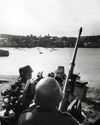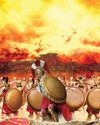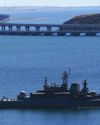Prøve GULL - Gratis
THE MANHATTAN PROJECT
History of War
|Issue 138
Einstein, Oppenheimer and the race to beat Hitler to the bomb. How a science project in the desert helped win a war
-

On 2 August 1939, Albert Einstein sent US President Franklin D Roosevelt a letter. In it, he warned that the recent discovery of nuclear fission in Nazi Germany could lead to the creation of “extremely powerful bombs of a new type”. The letter, which had actually been written by Hungarian physicist Leo Szilard, then hinted that the Germans were currently trying to develop such a weapon. Szilard believed that the only way to stop Hitler was to beat him in the race to build an atomic bomb. His hope was that by leveraging Einstein’s fame, they could convince Roosevelt to start a US atomic programme. It worked. Roosevelt’s Advisory Committee on Uranium held its first meeting on 21 October 1939, just weeks after the outbreak of the Second World War.
When the US eventually entered the conflict two years later after the attack on Pearl Harbor in December 1941, it found itself fighting a war on two fronts: one against Nazi Germany in the west, the other against Japan in the east. Roosevelt now prioritised the atomic project and tasked the US Army Corps of Engineers with building a bomb. They set up offices on the 18th floor of a skyscraper on Broadway in New York City and began work on what was to become the largest government-backed science programme in history. To keep the purpose of their work a secret, it was named after the district they looked out over. So, on 13 August 1942, the Manhattan Project was born.
Denne historien er fra Issue 138-utgaven av History of War.
Abonner på Magzter GOLD for å få tilgang til tusenvis av kuraterte premiumhistorier og over 9000 magasiner og aviser.
Allerede abonnent? Logg på
FLERE HISTORIER FRA History of War

History of War
BATTLE FOR THE CHANNEL ISLANDS
In 1945, the Allies were ready with a daring amphibious operation to liberate Jersey and Guernsey by force
8 mins
Issue 152

History of War
THE BOYNE
Three crowns were on the line when two kings met in Ireland on a sweltering summer's day
11 mins
Issue 152

History of War
PARIS DAVIS
This pioneering member of the United States Army Special Forces received long-overdue recognition for his heroism rescuing comrades during the Vietnam War
6 mins
Issue 152

History of War
FALL OF THE SPARTANS
The powerful Greek city-state overreached itself and saw its influence decline as it failed to integrate conquered territories
4 mins
Issue 152

History of War
MASTERS OF THE SKIES
From rapidly evolving roles to new technologies, historian and airpower expert John Curatola discusses how fighter planes shaped the Second World War
9 mins
Issue 152

History of War
TEA WITH TRAITORS
A progressive educator celebrated her birthday with a tea party for dissident friends – unaware that a Gestapo informant was among them
9 mins
Issue 152

History of War
CHURCHILL IN THE TRENCHES
How Britain's future war leader earned respect and redemption on the Western Front
13 mins
Issue 152

History of War
"MORE DANGEROUS THAN THE 1950S"
Do we need to relearn the Cold War's fear of mutually assured destruction in our unregulated nuclear landscape?
3 mins
Issue 152

History of War
CRIMEA IN THE CROSSHAIRS
The Black Sea peninsular has been coveted by rival interests for centuries, with the current Russian occupation motivated by several factors
5 mins
Issue 152

History of War
ON THE BRINK
Any conflict between the US and China would almost certainly see the American mainland come under direct attack
3 mins
Issue 152
Listen
Translate
Change font size

